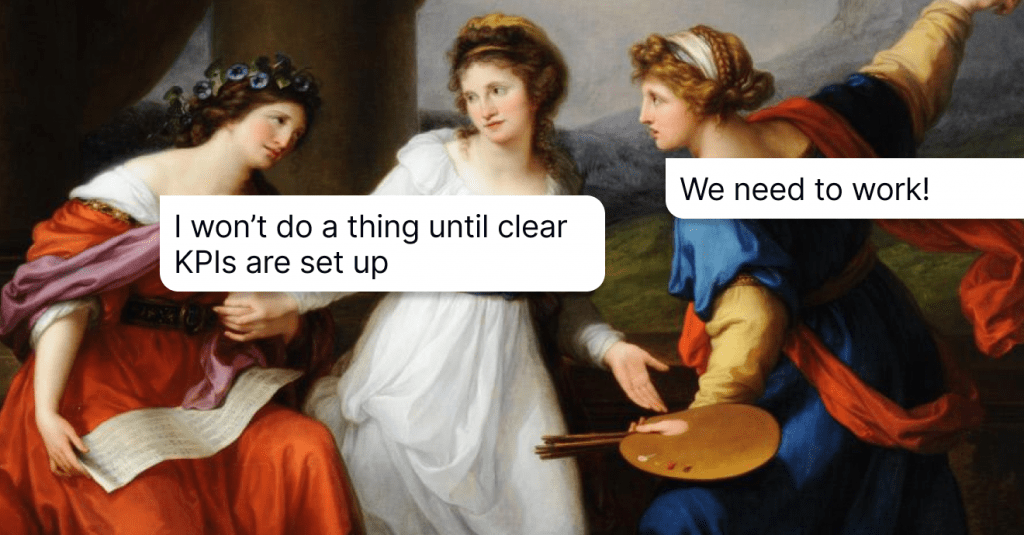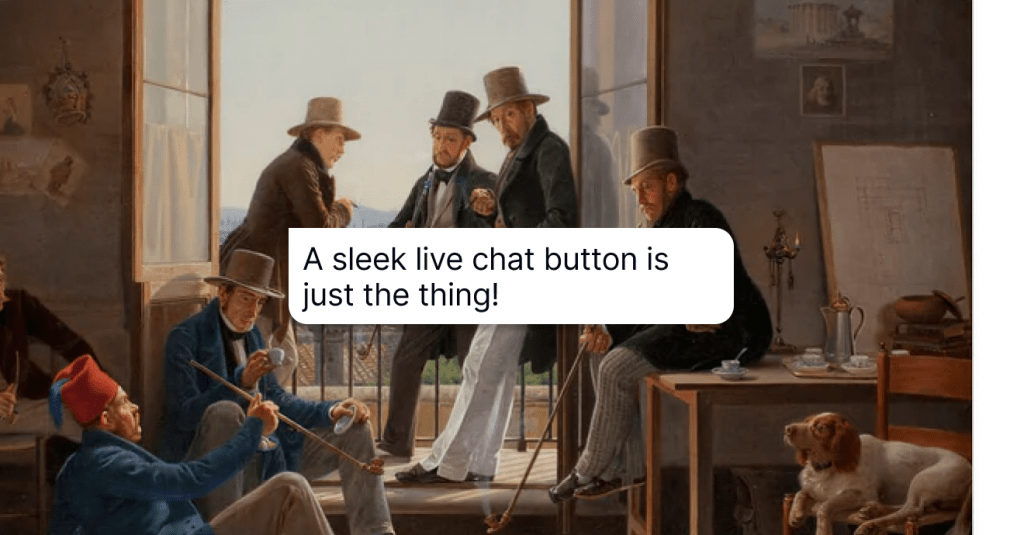How to Say “NO” to Customers in a Positive Way: 8 First-Hand Tips
How to say "NO" to a client sounding positive? There are 8 most helpful ways to do just that!
Written by Olesia Melnichenko

It’s no secret people don’t react well to a “No.” When we hear this word, our brain releases cortisol, the stress hormone, which leads to anger and disappointment.
Usually, the side effect of a negative answer is long conversations, anger, misunderstanding, and further escalations. To have more context, look at two hypothetical conversations that could take place between, say, Chris and Sarah, Phoebe and Jill.
Conversation 1:
Chris the Customer: Hello! I need a favor here. I would like to extend my subscription period to a year. Can you do that?
Sarah, the Support Agent: Actually, we don’t provide that. No exceptions are allowed. Chris: And you call yourself a customer care department? I want to speak to your manager!

Conversation 2:
Phoebe the Customer: Hello! I have a problem here. You already gave me two free trials in a row, but I had no time getting to the bottom of your product. I need to have another one.
Jill, the Service Agent: Good day, Phoebe! Despite that, the third time is a charm; our company policy allows only two free trials in a row. How about an easy alternative, though? We could schedule a product onboarding call anytime and show you the ropes.
Phoebe: Too bad! But alright, let’s do that.
The first dialogue got off to a rocky start. Obviously, Chris took Sarah’s unspoken “No” not very well. It’s because Sarah had no chance to read our article yet 😌 Anyways, we can only imagine how things may end in the long run.
Now, reread Jill’s response. What is so special about it? She knows how to say “No” to customers.
And you will, too! In this article, we discuss this topic elaborately and break down examples. Take a good note!
When saying “No” to customers is OK?
I know, I know. You must be thinking: “Why on Earth should I reject a client? I am too shy [insert your option] for this”. Numerous studies confirm that refusing people is quite awesome and positively impacts your mind. The same goes for customer service reps.
Giving clients your ” No ” is good and natural, trust me. There are several situations when you can do that with no remorse:
- When you understand that a client’s desire is far from realistic
Imagine you’ve just changed the whole dashboard layout or the pricing system. You will probably get requests like “Get everything back on the rails” or “How come your prices are so heavy??”.
Unfortunately, you can’t fulfill those queries no matter how you slice them. Try to explain why you can’t backpedal with all your heart and be highly convincing. For instance, if your website has a new design and a client is angry about it, say that you keep up with the times, and this fresh look provides a better UX for them.
Or if you removed some functionality and replaced it with another, more advanced one (which is inconvenient from the perspective of customer experiences), tell them you want to be the best for your loyal customers in every sense.
- When a customer’s wish is beyond your company policy
Don’t be surprised when abusive customers take a mile when you give them an inch. Cause you know, if you try to please all, you will please none. Telling people “No” when they ask for an additional discount, special unique favors, or anything extraordinary is no crime.
But here’s what you should be careful with – going against the company’s policy. You may look like a true angel in the eyes of a client, but when the top management comes to you with questions, you’d better be prepared. Some drastic measures down to a cut in your salary might happen.
Notwithstanding, I don’t say you shouldn’t make customers happy. Going the extra mile for them without rushing headlong is acceptable and even good for your client satisfaction strategy. But still, consider these points: Does your boss approve, and can you offer the same for other clients if need be?
- When you feel like you’ve had enough
Do you know the source of internal energy? If so, tell me where to get it. Come on, you work as a customer service representative, so your vital spirit can’t be unquenchable. That’s why you risk burning out if you don’t pick your battles and learn how to say “No” to customers.

If this very customer throws insults at you, comes over and over again unsatisfied, and is just being an evident jerk, you can even break up with them. Why not? You have only one health, everything else (even work) is attached. So, please define such situations beforehand and work comfortably to stay sane.
There is one thing to highlight before we come to the main narrative. When you’re bound to tell a client “No”, make sure you follow the Ask, Analyze, Act framework (AAA framework). Err on caution; do not wave goodbye to your client.
Why is it important to learn how to say “No” to customers in a positive way?
Navigating the delicate dance of saying “No” without leaving a bitter taste is a skill customer support agents need in their arsenal. But why is it such a crucial skill?
- Understanding your customer and their request
Clients aren’t just transactions; they’re the heartbeat of your business. That’s why understanding their motivations, preferences, and pain points is akin to wielding the magic wand of exceptional service.
Thus, before you utter that inevitable “No,” decode their request. Sometimes, it’s straightforward, but sometimes not, and clarity is key in the maze of people’s needs. Get this part right, and you’re halfway to delivering a positive “No.”
I mean, you don’t have to be a telepath; just be effective at communication, be an active listener, and have a healthy dose of empathy. Because knowing their needs helps tailor your “No” into a constructive “No, but…” that shows you’re still on their team.
- Establishing company policies and customer expectations
Every company has rules, and knowing them is your guiding star. If a client request strays beyond the policy lines, your “No” comes with a justified backbone.
And it will be even better if you set expectations upfront so there are no unwelcome surprises. A well-communicated denial is easier to digest when everyone knows the lay of the land. Especially when things get rocky, it’s paramount to keep your cool. Responding to fire with fire rarely yields positive results.
But remember, a well-phrased “No” here doesn’t mean slamming the door shut; it’s about redirecting to alternative solutions.
- Exploring alternative solutions to satisfy customers
So yes, closing one door doesn’t mean trapping your clients in a room without exits. Propose alternatives if appropriate. For instance, be flexible by not saying a direct “No” but more of a “How about this?” – a win-win where both parties leave satisfied.
So, fellow customer support representatives, buckle up for this journey. Mastering the art of saying “No” without the negativity hangover isn’t just a skill; it’s an excellent customer service superpower. So, let’s look at some of the best examples.
How to say “No” to customer requests and demands: 8 bulletproof ways
We are approaching the juiciest part – how exactly to say “No” to people without crying yourself to sleep. Here, you’ll also find some advice from experts and influencers in different industries. They are worth following. Off we go! 🚀
1. Be the master of grace and respect
It’s hard to show respect when saying “No”. However, it should be done with grace. Malte Scholz, CEO and Co-Founder of Airfocus, has their own view on the point:
Respect is the most important thing when rejecting a client. If you truly value and respect a potential customer, even though you must say ‘’No’’, this will reveal much about your values. Consequently, the client will take the rejection much better. When rejecting people, you should use specific language and a tone of voice and refrain from lengthy explanations, as these can always be easily misinterpreted.
Totally agree! It’s better not to promise the moon and sugar-coat. Build your response respectfully, using such words and phrases as:
- [client’s name], with all due respect, I think we need to take another solution…
- I realize what you mean, but it’s next to impossible at the moment.
- We don’t have this option yet, but how about looking at something you could be interested in…
- As long as you follow the instructions, it should be fine. Please let me know if you need help with something.
- For now, this is everything I can do. What can we do better next time?
Feel free to infuse them into your workflow! And yes, don’t forget to use the name. It will only smooth the waters.
2. Say again if needed
Repetitio est mater studiorum, which is “Repetition is the mother of learning” from Latin. I am hinting that you can express a “No” twice if need be. We at HelpCrunch – a one-stop customer relationship platform – are not afraid of doing just that when the situation takes a twist.
For instance, every time we feel like a difficult customer’s wish is far from being fulfilled. Still, they keep holding their ground, so we simply repeat the explanation, adding some “powerful” phrases, like “That’s right, but as I said earlier…” or “To give you a more in-depth view on that…” or “If my previous explanation was too vague, let me express it this way…”. In most cases, such a trick is of great help, and the issue is settled faster.
3. Disagree productively
From my perspective, they should teach how to say “No” to a potential customer at school. For that matter, there is this interesting example.
Michael Yeomans, an Assistant Professor of Organizational Behavior at Imperial College Business School in London, has pointed out essential features of the so-called productive disagreement. This concept has the following main stages:
- Acknowledgment. Every time you’re in a conversation with an ordinary person or a client, say ‘I understand’ or ‘I see your point’ to acknowledge that you’re listening to them.
- Hedging. Add such words as ‘probably’, ‘sometimes’, or ‘maybe’ to your answer rather than talking in absolutes. This will help you say a rejection with delicacy.
- Agreement. Affirm your client’s view by saying, “I can’t but agree…” or “I totally agree…” to show their opinion is entirely valid.
- Use rather positive terms. So, instead of saying, “You can’t gain access to this account”, choose, “You can gain access to this account after an easy authentication. Let me ask you some questions…”.
- Share personal experiences to encourage mutual respect. So, if you have no clue how to say “No” to customers positively, tell them a similar story that happened to you (or come up with one).
4. Ask why and say why
Why beat around the bush when you can just ask for customer feedback? Why do they want it? And explain why it’s impossible. Here is what Trysta Barwig, a travel expert and founder of This Travel Dream, has in mind on that matter:
The best way to say no to people is to put yourself in their shoes before responding. Try to understand why they’re asking for whatever they are asking for, and then try your best to explain your reasoning.
After working in customer service for many years, I have learned that most people want to be heard. Make sure you listen to them and understand what their needs are. Many people are quick to say no without even hearing the client.
5. Avoid generic replies
There is nothing worse than a mediocre answer to a client. As you know, every consumer wants to be unique, feel valued, and heard. So, never tar all your customers with the same brush. It gives your conversation a not-so-great vibe.
Even if you choose the way to tell a client you can not help them, do that masterfully, with every client in mind. The whole thing is that your reply doesn’t look robotic.
Richard Lubicky, the founder of RealPeopleSearch, says we should use more sentences like:
- Unfortunately, the request does not work with our policy.
- Sorry to hear about the issue. Only the authorized person can use our services.
- You would love to know that we have a better offer for you.
Nicely said! I, for one, think that you should be more creative in your narrative. Here are some ordinary phrases that can be transformed into extraordinary:
- No, we can’t do that → I have good and bad news. Which one would you like to know first?
- No idea. I will ask my colleague → Hmm, that’s an interesting case. Let me loop my colleague in…
- Stay in the chat. I am looking for a solution → While looking for the best solution to your issue, here is our newest blog article on the related issue. Spend some quality time!
6. Be transparent about your refusal
Can I be frank with you? Promising a client that you would transfer their wishes and demands to the development team with no intention to do so is toxic. But hey, people are no fools. They feel you’re being dishonest just like that. And this dishonesty can backfire.
Read what David Adler, founder and CEO of The Travel Secret, says on that matter:
Honest companies are appreciated by their clients. Transparency is, therefore, imperative when handling customer requests. Furthermore, saying “no” to some questions from the start is crucial if you know the answer will still be no, even if you analyze a situation. Even though a no was given, you should always emphasize that you are trying to resolve the problem in the future.
For example, “At the moment, we cannot offer phone service on the weekends, but we are working on extending our hours.”. Your customers will see you are honest, transparent, and more patiently accept no’s. They will also be better able to trust the company, knowing that you have been clear from the beginning and are willing to adapt.
Can’t but agree on this one. Being transparent can also pay huge dividends. For instance, your customer success strategy will be improved, and a fair share of angry customers will be satisfied. By the way, word-of-mouth marketing is never revoked.
7. Say “No” without actually saying it
This is my favorite step. It’s possible to convey a flat “No” without pronouncing the word. The experts we’ve surveyed shared their thoughts on how to say “No” to customers who sound nice and friendly:
Sam Shepler, CEO of TestimonialHero, claims that “the most polite and empathetic way to say no to a client is to avoid saying a flat no and employing positive language. It’s all about being helpful and encouraging to the people. However, the most important thing here is finding the closest solution to the problem, so the customer doesn’t leave upset, empty-handed, and never wanting to return.”
We are on the same page here. As a linguistic enthusiast, I have learned numerous synonyms, collocations, and phrases to diversify my vocab. Do you care to know some tricks, given our context?
| Instead of saying this… | Be positive! |
|---|---|
| No, I don’t know what you are talking about. | Sorry, you lost me on [the moment you don’t understand]. Could you be so kind and come again, so I can help you faster? 🙏🏻 |
|
No, we don’t provide that. |
We’re on our way to provide that to our customers. Stay tuned! 🙂 |
| No, you are not quite following. | Oops! 🙀 Let me put it another way, so you get the whole picture. |
By the way, if you feel like watching stuff, consider some explanatory videos from the experts in niche or psychologists. This is a great example to start with:
8. Come up with an alternative
So many men, so many minds. This client may not feel like upgrading to another tariff right now, or that man isn’t comfortable with your in-built product tour. Sometimes, you just have to offer another solution to the problem.
I like what Nicolas Holand of Goose Smurfs has in mind hereupon:
You can still say no without disappointing a person. Instead of just leaving them hanging, you can give them another resolution or alternative to make it work.
Here’s an example: “I truly understand your concern because I have been in the same situation. Although your preferred way is impossible now, we can still provide you with an alternative to cater to your concern and improve your current situation.”
Wrap it up
So, how to say ‘No’ to customers? I hope that is not already a question for you after this material. First, gather the context and all the valuable info about a client’s query. Then, think of what you’ll say, sounding as polite as possible. After that, come up with your negative but positive answer.
To practice your friendly customer communication, a sound platform is a must. Just sign up for a 2-week free trial with HelpCrunch. Use its all-around features to bring your marketing, support, and sales to a higher level.




